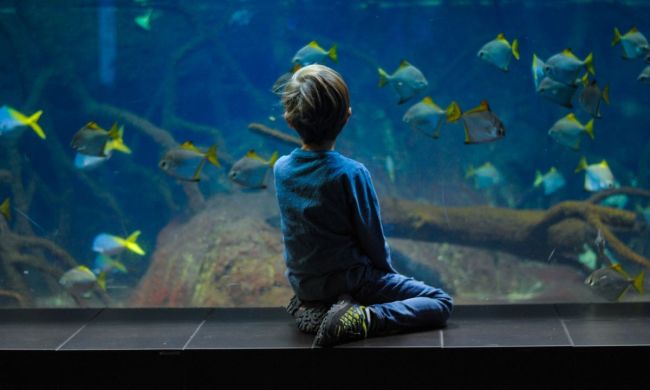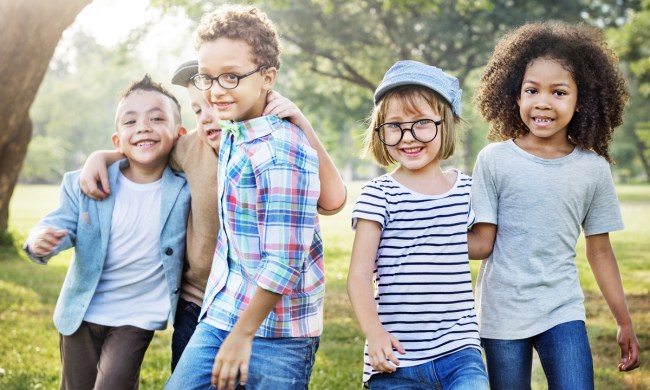Building blocks should be a childhood staple. Blocks are fun at any age, but they are also an essential component of early childhood development at home and in the classroom. Building blocks are vital in helping children to hone their fine and gross motor skills while stimulating imagination and creativity. In addition, blocks nurture problem-solving skills and self-esteem. So what’s not to love about them? Absolutely nothing, and incorporating them into your child’s playthings is a snap. Building blocks are available for all age groups from infants to school-age children. Even tweens and teens get into crafting those larger Lego items. Which building blocks are the best for kids? We’ve got the top picks for building blocks for all ages.
Infants
IQ Baby Knock-Knock Blocks are ideal for babies starting from infancy. These colorful, soft blocks are washable. Some make crinkle sounds or rattle. The Knock-Knock Blocks will stimulate your little one, are easy to handle, and make a perfect first block set.
6 months
B. Toys One Two Squeeze Baby Blocks are a great addition to a budding-block collection. These BPA-free soft blocks sport bright colors along with alphabet and number designs. The set of 10 is stackable, and yes, chewable, as well as washable. They come with a convenient storage bag, too.
1 year
The cloth and BPA-free blocks will still be going strong on baby’s first birthday, but add the Mega Bloks Big Building Bag to the gift list. This easy-to-handle set includes 80 blocks that fit together to make your toddler’s first creations. Mega Bloks fit together without fuss and are made for little hands.
2 years
You probably had those traditional ABC and 123 building blocks growing up. Well, so should your little guy or gal. This classic toy has never gone out of style and is a great set to bring into the mix around age 2. Uncle Goose Classic ABC Blocks are handmade in the United States from basewood and are nontoxic, which is good to know since most 2-year-olds still put a lot of toys in their mouth. The set of 28 blocks is stackable and a perfect fit for developing hands.
3 years
Your toddler has now crossed into the preschool-age bracket. While his or her early blocks are still useful, your preschooler is ready for more of a challenge. Oh, the things those little hands will create with Fat Brain Toys 100-Piece Wooden Block Set. This is another classic set that has stood the test of time on the playroom and classroom floor. It’s well-made and will last for years to come.
4 years
A preschool classroom staple is a set of large wooden building blocks. While your home may not have the storage space for a typical multiple-block, school-size set, Melissa & Doug’s Standard Unit Blocks set is a good fit for the house. The set includes 50 hardwood blocks, and it’s just right for creative 4-year-olds and can work in conjunction with other child building blocks.
5 years
As your preschooler transitions into kindergarten, the Melissa & Doug’s Standard Unit Blocks set is still a keeper, but now is a good time to introduce Lego building blocks. Instead of a kit to build a specific plane or car, start out with a Lego Classic Creative Brick Box Building Kit. With 790 pieces, this set will really bring out the imagination and creativity. It comes complete with a convenient storage box.
6 and beyond
Just because your child is entering elementary school doesn’t mean the blocks should be packed up for storage or donations. Blocks, from the introductory wooden to more complex sets, get a lot of mileage in the playroom. As kids move through primary to elementary grades, you will notice blocks are still getting a lot of attention while other toys collect dust. Lego sets become particularly interesting from age 6 and beyond, especially those focusing on a favorite genre like superheroes or Disney. Blocks and construction sets in general are excellent STEM toys. Other awesome building blocks for older kids include a KEVA Planks set, which is designed to teach kids the basics of physics and engineering concepts.
When it comes to kids and building blocks, you simply cannot go wrong. Blocks are an ideal STEM toy because building blocks stimulate crucial cognitive development as well as introduce math and engineering principles. Large and small building blocks are also an essential component in working those important fine and gross motor skills. The benefits of block play are numerous, including developing problem-solving and sharing skills. Just like in the classroom at school, you will find building blocks at home get a lot of use and are one of the last toys for kids to outgrow.



